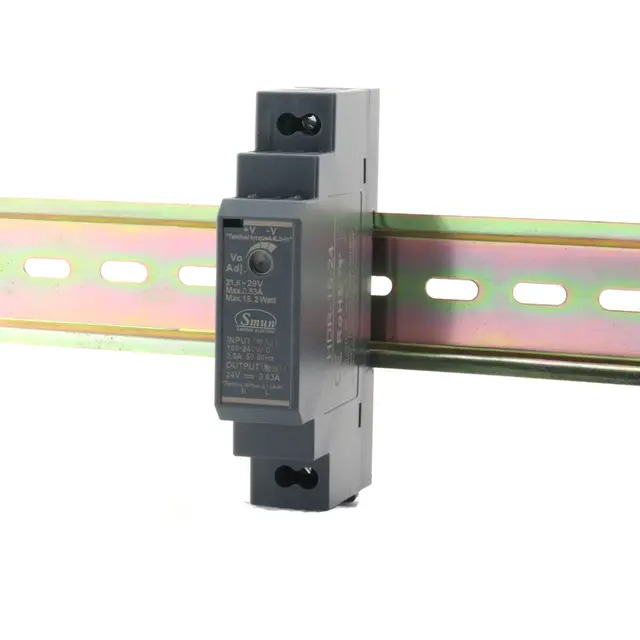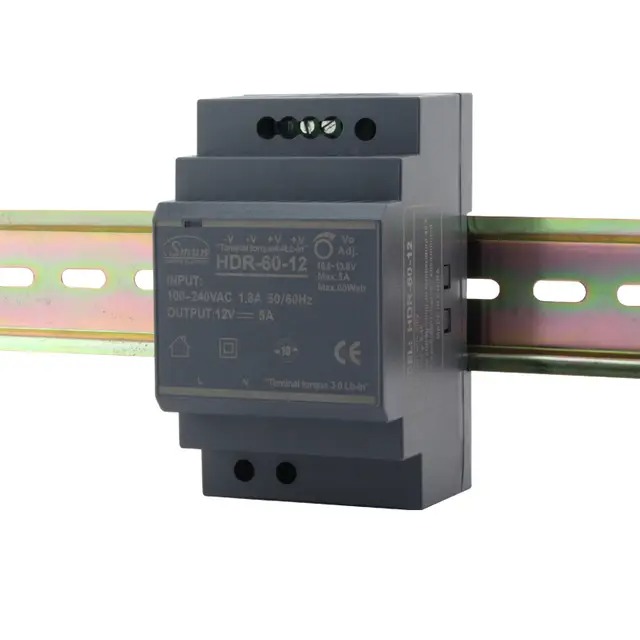
Switching power supplies have become the backbone of modern electronics, from industrial automation to consumer electronics. Despite their widespread adoption, concerns still persist—are switching power supplies noisy and less reliable compared to linear alternatives? In this article, we break down these concerns and offer detailed insights to help you understand the truth behind these assumptions.
What Is a Switching Power Supply and How Does It Work?
A switching power supply (also known as a switch-mode power supply or SMPS) is an electronic power converter that uses high-frequency switching and control circuitry to efficiently convert electrical power. Unlike traditional linear power supplies that rely on resistive voltage dropping and large transformers, switching power supplies regulate the output voltage using a series of transistors that rapidly switch on and off.
This high-frequency operation, often in the range of 20 kHz to several MHz, allows for smaller component sizes, lighter weight, and significantly higher energy efficiency. These characteristics have made switching power supplies the default choice for most modern devices.
Typical applications include:
| Application Type | Examples |
| Industrial Automation | PLCs, sensors, control cabinets |
| Consumer Electronics | TVs, game consoles, chargers |
| Communication Equipment | Routers, modems, base stations |
| LED Lighting Systems | Street lights, signage, architectural use |
However, while these advantages are undisputed, it's essential to explore the common criticisms surrounding noise and reliability.

Are Switching Power Supplies Really Noisy?
One of the most common criticisms of switching power supplies is electrical and acoustic noise. But to truly answer this question, we need to distinguish between two different types of noise:
1. Electrical Noise (EMI/RFI)
Switching power supplies inherently produce electromagnetic interference (EMI) and radio frequency interference (RFI) due to their high-frequency switching operations. However, modern switching power supplies, such as those used in regulated AC-DC converters, are designed with built-in EMI filters, shielding, and compliance to international EMC standards.
Moreover, the extent of noise often depends on the design quality. High-end industrial switching power supplies are engineered with tight tolerances, minimized ripple voltage, and filtered outputs to reduce electrical noise to levels well within acceptable limits.
2. Acoustic Noise (Buzzing or Whining)
Acoustic noise, on the other hand, can sometimes occur due to the magnetostriction in transformers or vibrations in ceramic capacitors when operating at certain frequencies. However, this is usually inaudible in well-designed supplies operating above 20 kHz, which is outside the human hearing range.
While all switching power supplies generate some level of noise, it’s not inherently problematic and is often well-controlled through proper engineering.
How Reliable Are Switching Power Supplies?
Another widespread myth is that switching power supplies are less reliable than linear power supplies. Let’s address this by understanding the factors that affect reliability:
1. Thermal Management
One concern in switching power supply design is heat generation. Because these devices work at high frequencies, they generate localized heat in components like MOSFETs and inductors. However, most modern designs integrate thermal shutdown protection, over-temperature control, and efficient heat sinks or airflow-based cooling systems.
Proper thermal management ensures that the components operate well below their maximum temperature ratings, significantly extending the life of the power supply.
2. Built-in Protection Mechanisms
Today’s switching power supplies often come equipped with a range of protective features:
| Protection Type | Function |
| Over Voltage Protection | Prevents output spikes from damaging connected devices |
| Overload Protection | Shuts down or limits current under high load |
| Short Circuit Protection | Safeguards internal components during short circuit events |
| Over Temperature Shutdown | Automatically disables output during overheating |
These features not only enhance the safety of the device but also add significant value to overall reliability.
3. Long Lifespan and MTBF Ratings
Well-designed switching power supplies often boast MTBF (Mean Time Between Failures) ratings of 100,000 hours or more. With proper usage and installation, they offer years of uninterrupted service in industrial and commercial environments.

Comparing Switching Power Supply Reliability vs. Linear Power Supply
To provide a more objective view, let’s consider the major differences:
| Feature | Switching Power Supply | Linear Power Supply |
| Efficiency | 80–95% | 50–60% |
| Size and Weight | Compact and lightweight | Bulky and heavy |
| Heat Output | Lower due to high efficiency | Higher due to energy loss |
| Noise (EMI/RFI) | Higher but controllable | Very low |
| Regulation and Flexibility | High precision with wide range | Limited |
| Lifespan | Long with proper design | Long but less feature-rich |
While linear power supplies might win in low-noise environments (such as audio or lab equipment), switching power supplies dominate in almost all other areas, especially where space, cost, and efficiency are important.
Common FAQs About Switching Power Supplies
Q1. Can switching power supplies damage sensitive electronics?
Not if designed correctly. With proper filtering, regulation, and over-voltage protection, switching power supplies are perfectly safe for sensitive devices such as microcontrollers, LEDs, and communication equipment.
Q2. Why do some devices buzz when powered by a switching supply?
Buzzing usually results from subpar design or aged components. Quality designs operate above 20 kHz to avoid audible frequencies and use stable magnetic components to prevent coil whine.
Q3. What certifications should I look for?
Look for certifications such as CE, UL, RoHS, and FCC compliance. These indicate that the product has passed rigorous testing for safety, efficiency, and electromagnetic compatibility.
Q4. Are all switching power supplies the same?
Not at all. They differ in topology (buck, boost, flyback, forward), input/output ratings, protection features, form factors, and build quality. Choosing a well-reviewed, application-specific model ensures better performance and reliability.
Best Practices for Installing a Switching Power Supply
To maximize the performance and lifespan of your switching power supply, consider these guidelines:
Ensure adequate ventilation. Heat buildup can drastically reduce lifespan.
Use proper fusing and circuit protection on the input side.
Avoid overloading. Always allow a 20–30% buffer above your maximum load requirement.
Install surge protection in environments prone to power spikes or lightning.
Maintain clean wiring practices to minimize EMI issues and ensure stable operation.
When these measures are followed, switching power supplies can run silently, efficiently, and for years without failures.
Conclusion
The short answer is no—not when designed and installed correctly.
While switching power supplies do generate some level of electrical and acoustic noise, these are well-managed in modern designs through advanced filtering, shielding, and frequency optimization. Likewise, concerns over reliability are outdated, as today’s switching power supplies come with high MTBF ratings, built-in safety features, and thermal protection mechanisms that ensure long-term, stable performance.
If you're selecting a switching power supply for industrial automation, LED systems, or sensitive electronics, prioritize one that meets international standards, offers comprehensive protection, and matches your output/load requirements.
By doing so, you’ll enjoy the benefits of high efficiency, compact design, and superior reliability—without the drawbacks of noise or instability.


















